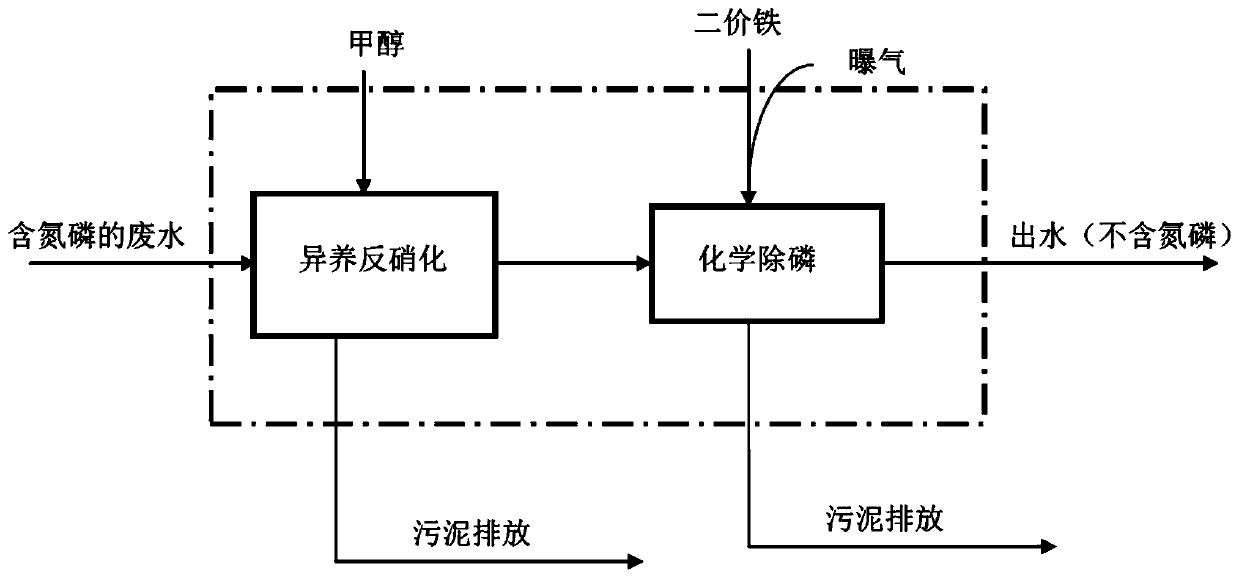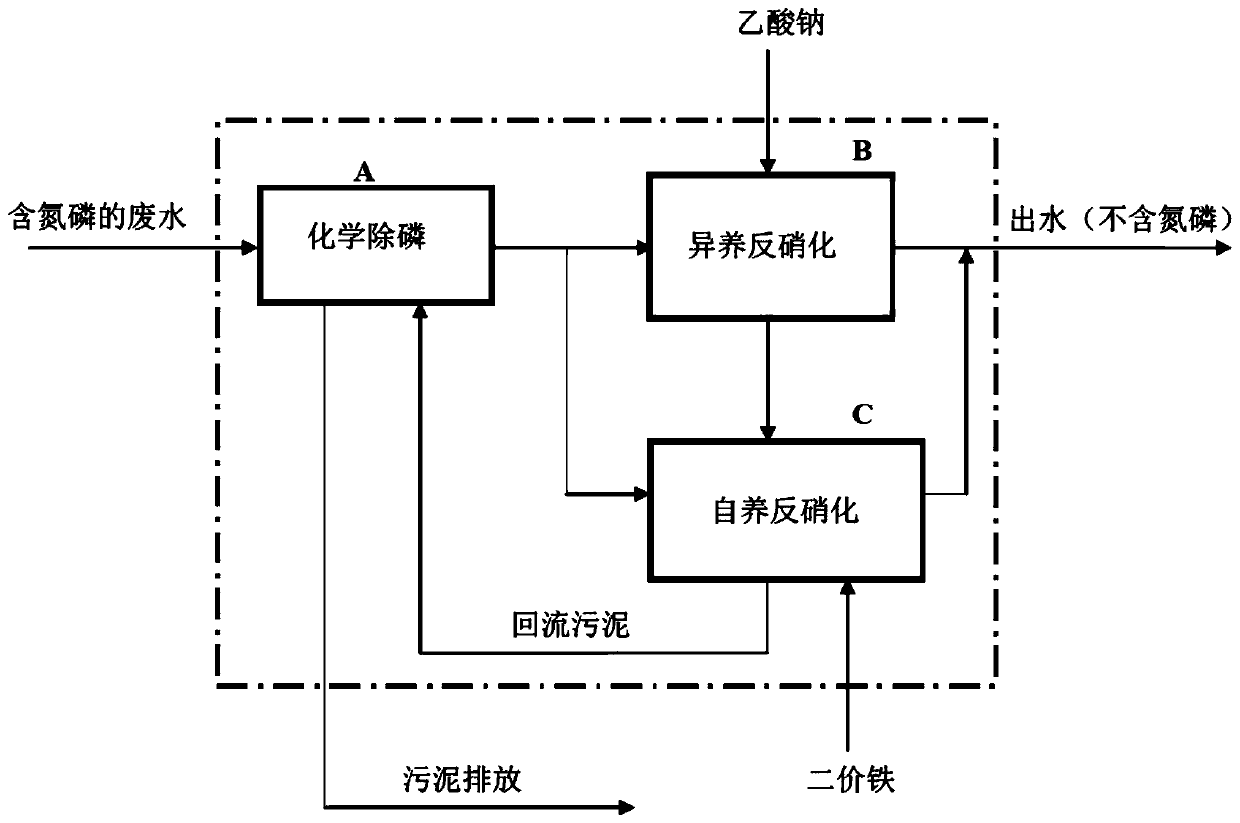Synchronous nitrogen and phosphorus removal sewage treatment process
A simultaneous denitrification and phosphorus removal and sewage treatment technology, applied in water/sewage treatment, water/sewage multi-stage treatment, water/sludge/sewage treatment, etc., can solve the problems of complex operation methods and high costs, and achieve environmental protection The effect of utilization
- Summary
- Abstract
- Description
- Claims
- Application Information
AI Technical Summary
Problems solved by technology
Method used
Image
Examples
Embodiment 1
[0042] In the sewage treatment process for synchronous denitrification and phosphorus removal in this embodiment, the concentration of nitrate nitrogen in the wastewater is 120 mg-N / L, and the concentration of phosphate is 20 mg-P / L. Specific steps include:
[0043] Step 1: Wastewater containing nitrogen and phosphorus pollutants first enters the chemical phosphorus removal section A to remove part of the phosphorus in the sewage. Part of the sewage after phosphorus removal in the chemical phosphorus removal section A enters the heterotrophic denitrification section B for denitrification, and the other part Sewage enters autotrophic denitrification section C for denitrification. The pH of the chemical phosphorus removal section A is controlled at 5-5.3, and the phosphate removal rate reaches 65% after this stage, and the phosphorus removal capacity of the returning sludge in the autotrophic section is 0.9mg-P / (g VSS min).
[0044] Step 2: Add sodium acetate to the sewage in t...
Embodiment 2
[0049] In the sewage treatment process for synchronous denitrification and phosphorus removal in this embodiment, the concentration of nitrate nitrogen in the wastewater is 120 mg-N / L, and the concentration of phosphate is 20 mg-P / L. Specific steps include:
[0050] Step 1: Wastewater containing nitrogen and phosphorus pollutants first enters the chemical phosphorus removal section A to remove part of the phosphorus in the sewage. Part of the sewage after phosphorus removal in the chemical phosphorus removal section A enters the heterotrophic denitrification section B for denitrification, and the other part Sewage enters autotrophic denitrification section C for denitrification. The pH of the chemical phosphorus removal section A is controlled at 5-5.3, and the phosphate removal rate reaches 77% after this stage, and the phosphorus removal capacity of the returning sludge in the autotrophic section is 0.95mg-P / (g VSS min).
[0051] Step 2: Add sodium acetate to the sewage in ...
Embodiment 3
[0056] In the sewage treatment process for synchronous denitrification and phosphorus removal in this embodiment, the concentration of nitrate nitrogen in the wastewater is 120 mg-N / L, and the concentration of phosphate is 20 mg-P / L. Specific steps include:
[0057] Step 1: Wastewater containing nitrogen and phosphorus pollutants first enters the chemical phosphorus removal section A to remove part of the phosphorus in the sewage. Part of the sewage after phosphorus removal in the chemical phosphorus removal section A enters the heterotrophic denitrification section B for denitrification, and the other part Sewage enters autotrophic denitrification section C for denitrification. The pH of the chemical phosphorus removal section A is controlled at 5-5.3, and the phosphate removal rate reaches 72% after this stage, and the phosphorus removal capacity of the returning sludge in the autotrophic section is 0.92mg-P / (g VSS min).
[0058] Step 2: Add sodium acetate to the sewage in ...
PUM
 Login to View More
Login to View More Abstract
Description
Claims
Application Information
 Login to View More
Login to View More - R&D
- Intellectual Property
- Life Sciences
- Materials
- Tech Scout
- Unparalleled Data Quality
- Higher Quality Content
- 60% Fewer Hallucinations
Browse by: Latest US Patents, China's latest patents, Technical Efficacy Thesaurus, Application Domain, Technology Topic, Popular Technical Reports.
© 2025 PatSnap. All rights reserved.Legal|Privacy policy|Modern Slavery Act Transparency Statement|Sitemap|About US| Contact US: help@patsnap.com


